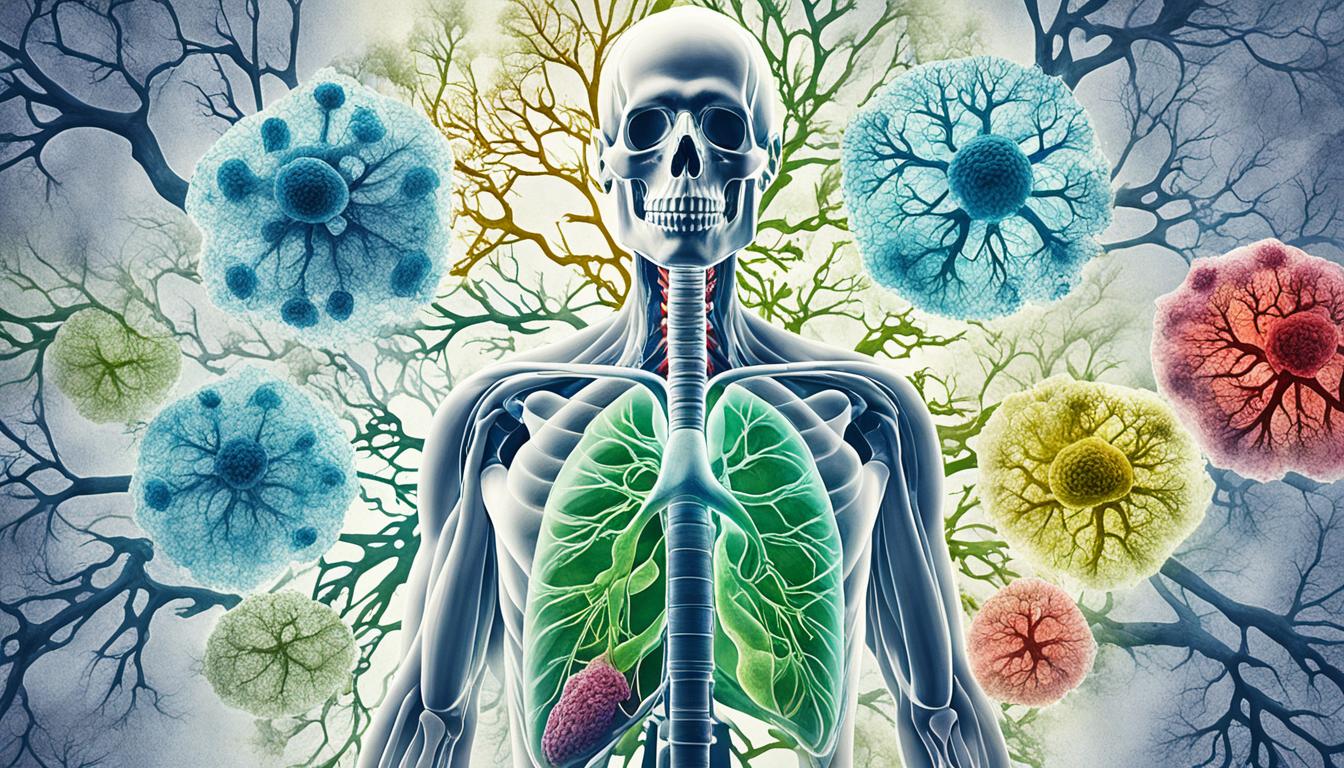Malignant mesothelioma is a rare and aggressive cancer. It affects the mesothelial cells. Mainly, it occurs due to exposure to asbestos. Asbestos was widely used in building materials and various products. People working in construction, factories, and shipbuilding, as well as miners, might get exposed.
Knowing the symptoms of mesothelioma early is key. This helps in starting treatment quickly. Symptoms like trouble breathing, chest pain, and a buildup of fluid in the chest can show up. But these signs are not just for mesothelioma. They can be like other lung diseases, which makes it hard to diagnose.
Using X-rays, CT scans, and MRIs sometimes is not enough to diagnose mesothelioma. Doctors need to do biopsies to be sure.
There is no cure for mesothelioma yet, but new treatments are being developed. One exciting treatment is stem cell therapy. Stem cells can change into many types of cells. This could offer new ways to treat cancer in a personalized way.
Key Takeaways
- Malignant mesothelioma is an aggressive cancer that affects the mesothelial cells.
- Exposure to asbestos, commonly found in construction materials, is the leading cause of mesothelioma.
- Common symptoms include shortness of breath, chest pain, and pleural effusions.
- Diagnosis can be challenging, and additional tests, such as biopsies, are often necessary.
- Stem cell therapy shows promise in the treatment of mesothelioma.
Risk Factors and Causes of Mesothelioma
Several risk factors and reasons are key in developing mesothelioma. It’s vital to know these for early detection and to prevent this fast-growing cancer.
1. Asbestos Exposure
Asbestos exposure is the main cause of mesothelioma, seen in more than 75% of cases. Jobs like in construction, factories, mining, and shipbuilding have a big risk. This is because those fields often use asbestos.
2. Radiation Exposure
Radiation exposure is a less common cause but is still associated with mesothelioma risk. This risk is higher for people who had radiation therapy for other types of cancer.
3. Family History
If someone’s family has had mesothelioma, their own risk increases. Getting regular screenings and avoiding asbestos as much as possible are important for these individuals.
4. Asbestos-Related Diseases
People who previously had asbestos-related illnesses, like asbestosis or lung cancer, are more at risk for mesothelioma. These illnesses come from long-term asbestos exposure.
5. Environmental Exposure
Living near asbestos or being in areas where asbestos is disturbed can expose one to its dangers. This can happen when asbestos in soil or rocks gets into the air. It’s a risk for people living near asbestos mines or buildings with asbestos.
Avoiding asbestos and taking precautions at work is critical to lower the risk of mesothelioma. It’s also essential to get screened regularly. Doing so helps find it early, which can improve treatment success and raise survival chances.
| Risk Factors | Percentage |
|---|---|
| Asbestos Exposure | 75% |
| Radiation Exposure | Rare but significant |
| Family History | Increased Risk |
| Asbestos-Related Diseases | Higher Risk |
| Environmental Exposure | Potential Risk |
Diagnosis and Treatment Options for Mesothelioma
Diagnosing mesothelioma is detailed. It includes exams, scans (like X-rays, CT scans, and MRIs), and biopsies. These steps find out if the cancer is there and its stage. This information is key in making a treatment plan that fits the patient.
Treatments for mesothelioma vary. They can involve surgery, chemotherapy, and/or radiation. Doctors may also use a mix of these treatments for the best effect. Surgery removes the tumor and some surrounding tissues. Chemotherapy and radiation kill cancer cells or slow their growth.
There are also newer treatments like immunotherapy, gene therapy, and stem cell therapy. Immunotherapy boosts the body’s ability to fight cancer. Gene therapy changes cancer cells to make them easier to treat. Stem cell therapy helps the immune system and might slow down tumors.
Mesothelioma is not curable, but early and aggressive treatment can help. It’s important for patients to know their options. Working with healthcare providers to find the best plan can improve their chances and life quality.

